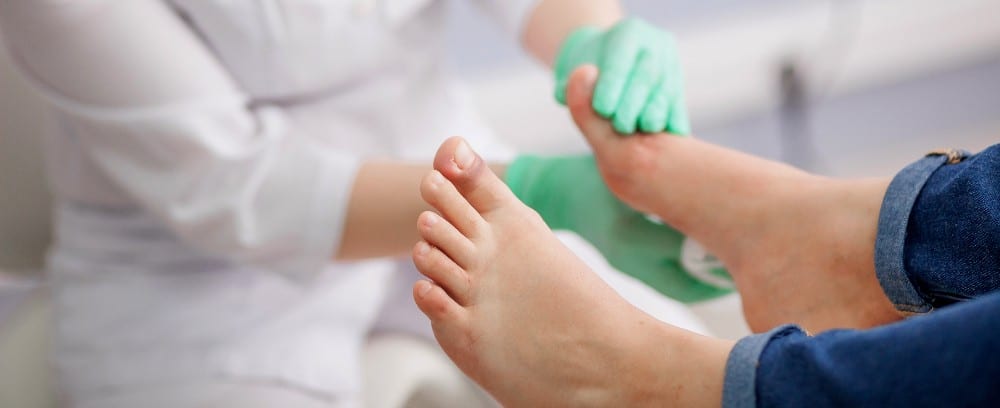Diabetic Ulcers: Prevention and Treatment Strategies
Foot ulcers are a huge problem for people with diabetes, neuropathy, poor circulation, and other related conditions.
How huge? Consider that around 100,000 Americans must get part of a foot or leg amputated each year as a direct result of diabetic foot wounds that never properly healed. And the five-year survival rate after these amputations hovers around just 50 percent.
When you consider what’s at stake, it’s clear that anybody with diabetes should make the following commitments to themselves for their future health and happiness:
- Do everything they can to stop serious ulcers from developing in the first place—which includes seeking a foot and ankle specialist at least once a year for a comprehensive diabetic foot checkup.
- If an ulcer does form, seek out professional care from a diabetic wound care expert as soon as possible.
Fortunately, you don’t have to look far to get the quality comprehensive care you deserve. Waco Foot & Ankle can help you manage all aspects of diabetic foot and wound care, helping you protect and preserve your feet for years to come.

How to Prevent Diabetic Ulcers from Forming
Prevention is always preferred over treatment.
Fortunately, most diabetic wounds can be prevented. And furthermore, the most serious complications from diabetic wounds (including severe infections and amputations) can almost always be prevented if you follow your diabetic foot care routine faithfully and seek intervention as early as possible when you spot issues.
Here are some important strategies that can help you avoid developing ulcers in the first place:
- Check your feet every day. Do it at a consistent time so you won’t forget. Carefully view and feel every part of your foot, including the tops, sides, soles, toes, nails, and even spaces between the toes. Note any trouble spots, even seemingly minor ones (scrapes, swelling, redness, temperature changes, etc.) If a trouble spot isn’t improving after a couple of days, or there’s a break in the skin that isn’t healing or is getting larger, call us right away.
- Manage your blood sugar. Ultimately, it’s unregulated high blood sugar levels that cause deterioration in circulation and nerve health, which in turn makes diabetic ulcers possible. Staying on top of managing your condition, as early and as consistently as possible, provides long-term protection for your feet.
- Don’t go barefoot, particularly if you have neuropathy. This includes indoors. Even minor cuts and scrapes can develop into ulcers if you aren’t careful, and especially so if you have decreased sensation in your feet. You might not even realize you’ve been injured until hours or days later.
- Wear appropriate shoes. Of course, it’s not enough to simply put protection on your feet. Shoes that are ill-fitting, unsupportive, or even just have scratchy interior seams may create pressure and friction spots that can break down skin.
- Consider diabetic shoes and orthotics. Diabetic shoes are specially designed footwear, dispensed by a doctor and optimized for diabetic wound prevention. They come in just about every popular style and look just like any other shoe, but have been built with some extra features that help protect feet and skin (such as seamless interiors and extra depth for orthotics). We are one of the only practices in Waco that fits and dispenses diabetic shoes – as well as the custom orthotics that fit into them – and they do a fantastic job helping at-risk patients reduce and eliminate the pressure and friction points that lead to ulcers.
- Schedule an annual comprehensive diabetic foot care checkup. This is important even if you haven’t had any problems with your feet in the last year. Dangerous complications of diabetes, such as neuropathy and peripheral artery disease, often develop slowly. You may not notice them on their own until the damage is substantial (and potentially irreversible). Regular checkups help us detect and manage these problems early, as well as help you manage all other aspects of your foot care.
- Download a FREE copy of our helpful guide. If you’d like to have even more detailed preventative care information at your fingertips, request a free copy of our e-Book, “A Helpful Guide to Recognizing Diabetic Foot Problems.” We’ll send it right to your inbox!

What to Do If You Spot a Potential Diabetic Foot Ulcer
Not to sound like a broken record, but when it comes to diabetic ulcers—or even the potential for diabetic ulcers—it’s much better to be safe than sorry. The possible consequences of acting too slowly can be devastating.
The best way to curtail the risk of a wound developing into a serious infection is to begin treatment with a diabetic wound care expert as soon as possible. If you live in and around Waco, trusting your feet to the team at Waco Foot & Ankle is a decision that could literally save your foot, if not your life. And if another doctor has told you that you need an amputation, please seek out a second opinion from us IMMEDIATELY—we may still be able to help!
Our advanced wound care services include state-of-the-art therapies, including one of the only amniotic membrane graft products on the market that is not dehydrated and contains living, viable cells. This makes it an exceptional wound covering, because not only does it keep germs out, but it also accelerates the healing process and helps your skin rapidly construct new tissue.
If you’d like to learn more about this incredible therapy and how it has helped us save patients from severe wounds and almost certain amputation, be sure to check out this previous blog post.
Is It Time to Schedule Your Appointment with Waco Foot & Ankle?
If you have diabetes and you have an emerging issue with your feet that you’re concerned about, or it’s just been more than a year since you’ve checked in with a podiatrist, the answer here is yes.
From preventative care to routine maintenance to advanced wound care and limb preservation, we are your No. 1 choice for ensuring your long-term foot and ankle health.
To request your appointment, give us a call at (254) 776-6995 or complete our online contact form.
